Set up more than 45 years ago, the glass program at River Falls, Wisconsin, has empowered students from rural backgrounds to discover their voices.
By Andrew Page, Urban Glass
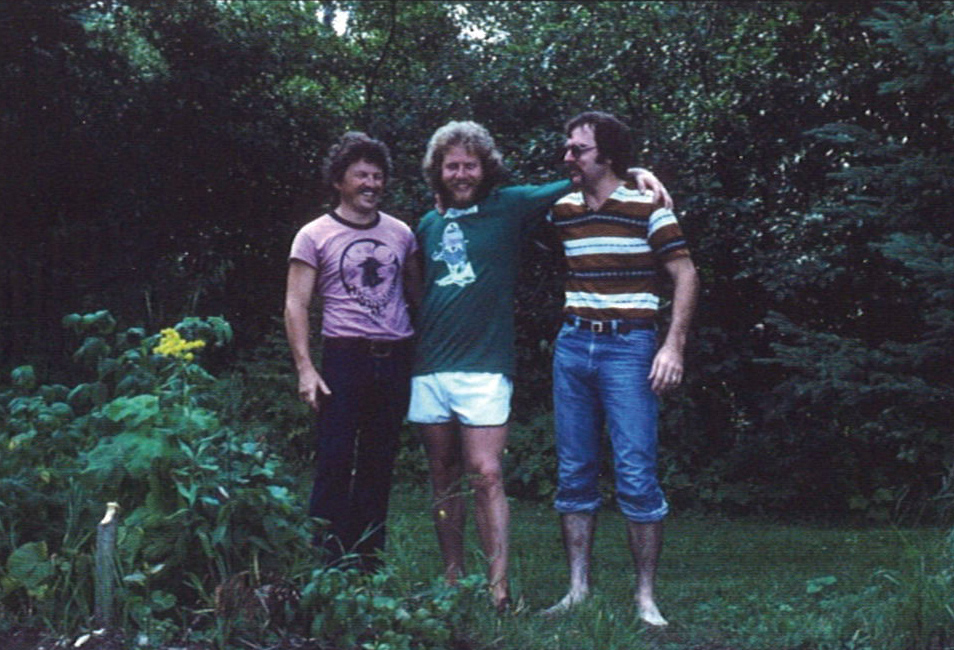
(L to R) Doug Johnson, Jon Clark, and Gene Koss in a 1978 photo.
Thirty miles east of Minneapolis, across the upper Mississippi River that defines the Minnesota-Wisconsin state border, the campus of the University of Wisconsin at River Falls sprawls over more than 400 acres and includes two laboratory farms. The reason for the large agricultural education program becomes clear if you continue eastward, where very quickly you are engulfed in large tracts of farmland. It was here in Midwest farm country, in 1965, that sculptor Doug Johnson, fresh from his graduate studies with Harvey Littleton at University of Wisconsin at Madison, was hired to start a glass program within the well-regarded art department, which draws equally from the Twin Cities of Minneapolis and St. Paul and the farming communities of rural Wisconsin.
Like his glass professor Littleton, Johnson worked with clay as well (he studied ceramics with Don Reitz at Madison), and while he built the glass department, including all the equipment, he always balanced his energy between the two materials. Eventually, ceramics won out as his focus, but for 12 years he oversaw the River Falls program, which would produce major glass artists with big ambitions and unique visions for sculptural expression in the material. The work of the students that came through River Falls during Johnson’s direction of the glass program-and that of his successor and former student, Jim Engebretson, who took over in 1979-is the subject of an exhibition currently on view at the Bergstrom Mahler Museum, “Glass Legacy.”
‘‘I’m very proud of starting the program from its real infancy,” said Johnson in a telephone interview. “We were building equipment we didn’t know how to build, learning as we were doing, because you couldn’t go out and buy it all like you can these days.”
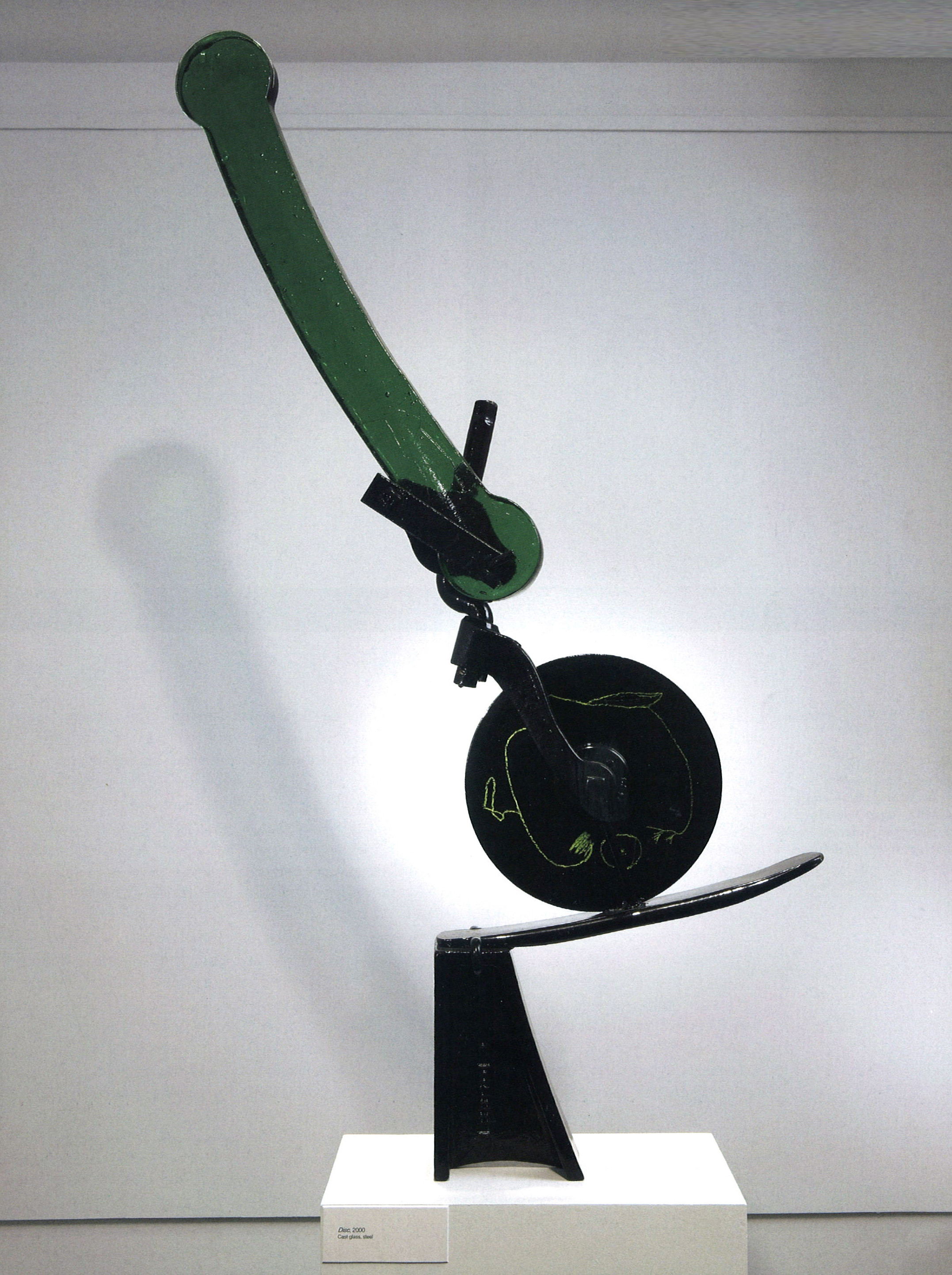
Gene Koss, Disc, 2010. Cast glass, steel. H 50, W 30, D 10 in.

The collaborative work of James Engebretson and his wife, Renee Nielsen Engebretson, references patterns found in nature.
Swept up in the do-it-yourself spirit of the times, Johnson embraced Littleton’s approach to glass, which he says was “anti-technique.” The goal was to avoid obsessions over symmetry and precision in favor of work that was undeniably sculptural in intent, embodying ideas and creating objects that stood as a bold statement of personal vision. Building your own glass equipment was part of the experience, an empowering ritual that set the tone for a muscular and somewhat macho search for expression. For some of his students from the rural part of the state, his undergraduate glass program was their first experience of art of any kind.
“I came off of a farm,” recalls Gene Koss, artist and head of the glass program at Tulane University in New Orleans. “Doug took us up to the Walker Art Center, brought in guest artists, and if he felt you had the potential to be a heavy hitter, he bragged on you, pushing you to be in the studio all the time.”
For Johnson, who believes in discovery through doing, the continuous melt furnace at River Falls, which made glass available 24 hours a day for his students, was a particular point of pride and something he was able to build with the resourcefulness of his students.
“I did recognize that many of these guys, especially those who had grown up on a farm, were very able and capable of doing things,” recalls Johnson. “I still remember one day Gene said to me, ‘I don’t know what to make,’ and I told him, ‘You came from the farm, didn’t you? There are an awful lot of good shapes on the farm.”‘
Koss, of course, would go on to devote his career to realizing monumental cast-glass work referencing the agricultural machinery that defined the landscape of his upbringing, abstracting the forms and mixing materials.
“Gene uses glass in very sensitive yet gutsy ways that are always honest to the material,” says Johnson of his former student.
“Doug was a really loose instructor but really professional,” recalls Koss. “He took the time with the ones who he thought were going to go on. He was way ahead of his time, doing things that I think every art professor aspires to. When I compare myself to him, I think I worry that I am overdoing the structure and don’t let the students work things out themselves the way he did.”
Koss remembers that Johnson spray-painted “Take the Ball and Run With It” on the wall of the glass studio. When asked, Johnson confirms it, adding that he also spray-painted “No More War” but was asked to cover it over by the university administration. Johnson embodied the spirit of the times, and the 1960’s were a time of growing opposition to the war in Vietnam and the coalescing of a counterculture in opposition to establishment culture.
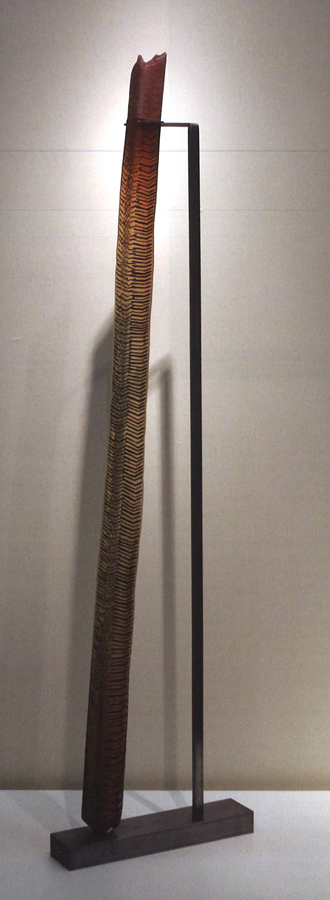
Jon Clark, Bullhead Skin, 1981. Enameled glass, steel. H 61, W 16 in.
After River Falls, Koss went on to graduate studies with another alumnus of Johnson’s program, Jon Clark, who was heading the glass department at the Tyler School of Art and was somewhat of a legend at River Falls. Clark, who had done his graduate studies at the Royal College of Art in London, was already making a name for himself in the glass world. Like Koss, he grew up in rural Wisconsin, though not on a farm. “I come from a working-class background but was an art student all through grade and high school,” says Clark. “River Falls always had one of the best art programs in the state university system. I didn’t know a thing about glass; I expected it to be like painting. But once I got my hands on glass, it was such a challenge; you had to find a way to do it.”
Jon Clark, who preceded Koss at River Falls and was part of the first glass class, remembers that Johnson embraced the newness of glass as an art material. “He was giving us permission to redefine the material and its potential,” Clark said in a telephone interview. “He didn’t want to show us too much; he didn’t want to ruin that particular freshness that we all come to it with.”
Clark’s class included Jim Engebretson, who would take over the program from Johnson after graduate studies with Dale Chihuly at the Rhode Island School of Design. Another member of that first class was Mick Meilahn, who would go on to graduate study with Joel Philip Myers and then divided his career between sculpture and running his family’s l,000-acre farm. Some of his work grapples with the issues of genetically modified crops, among other agricultural themes.
“We were a very competitive group,” says Clark. “We were both competitive and supportive, discovering the whole world of glass.”
Johnson worked to empower his students. Clark recalls “Doug would put it back on us, saying, Glass is yours for the taking, you just have to find your own vision. I was all about the force of glass, the dynamic aspects of this alive material; Jim was more concerned with the design traditions of northern European glass; and Mick was interested in working through form and function. All of us were on a mission to redefine glass.”
To Clark, who would also spend his career as an educator running the glass program at the Tyler School of Art, Johnson was a gifted instructor. “Doug’s passion was for clay, and because of his nonchalant relationship with glass, he wasn’t neurotic and was very generous with what he could offer. And he set something up that was magical in a way … we were stress-free, playing, discovering, Abstract Expressionists in 3D, trying to get this material to move naturally.”
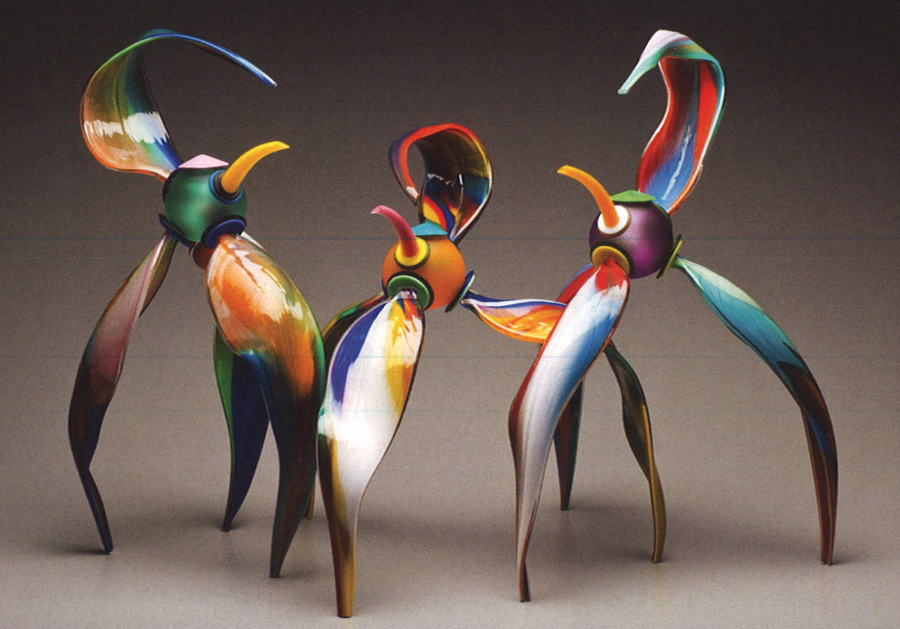
Stephan Cox, Dancing Teapots, 2011. Blown and hand-carved glass. H 18, W 14, D 14 in.
Taking over the glass department from Johnson in 1979, Engebretson built on the foundation of his former instructor. “I think we gave students permission to be creative and permission to fail,” he says in a telephone interview. Engebretson made Johnson’s inculcation of self-reliance more formal, encouraging his students to think of their art as a formal commitment to a vision. “All of my advanced students had to write a contract of what direction they wanted to pursue.” He also broadened the offerings. “When Doug taught the courses, it was strictly hot glass, but I added kiln-casting, hot casting, fusing, stained glass,” he says.
Engebretson’s approach was shaped by Johnson but also by his graduate studies at the Rhode Island School of Design. “Dale [Chihuly] really encouraged a much more self-directed program for all of his students,” he says. “I carried that with me.”
Engebretson was fond of showing his students his own work and then making it clear that he didn’t expect them to imitate his output. “I would always say, The reason I do this work is so you don’t have to. It’s called creativity.”
By fostering independence in his students, Engebretson was carrying on Johnson’s style of teaching. “You look at the work coming out of his program; none of it looked like Doug touched it in any way.” A touch of the heroic impulse is there in Engebretson’s approach as well. “I wanted to encourage a freedom to make things that never existed before and wouldn’t if not for your efforts. If you’re trying to do something that has never been done before, nobody can show you how to do that. You have to create your own map, your own path.”
Asked whether his approach worked thanks to the self reliance of Midwestern farmers, Engebretson agreed, but also pointed to the era in which the studio was established. “There was a spirit of rebellion and a desire to make pieces that would make a difference.”
Among the students Engebretson mentored were Andy Brott, now based in New Orleans, and Stephan Cox, who maintains a studio in River Falls. Both are included in the “Glass Legacy” exhibition, which was organized by Eoin Breadon, who took over the River Falls glass program when Engebretson retired in 2010. Breadon studied with Jon Clark at Tyler, and so the exhibition is aptly titled, as the influence of a single program, and the connections it fosters, continues to evolve.
ANDREW PAGE is the editor of GLASS.
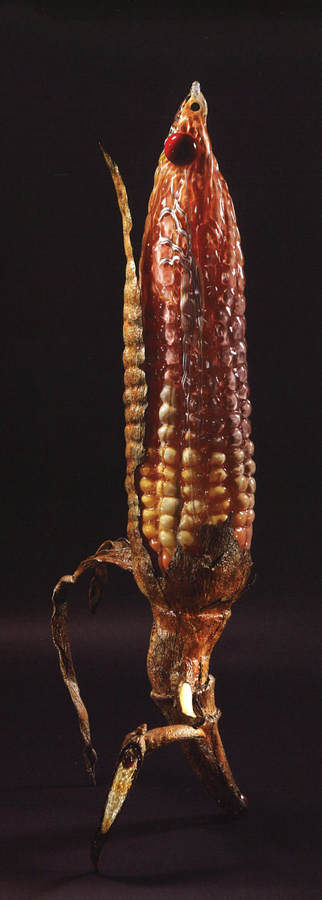
Michael Meilahn, Red Ball III (from the "Smart Number" series), 2010.

Scenes from the "Glass Legacy" exhibition student reunion demo at the glass studio of River Falls, 2013.
